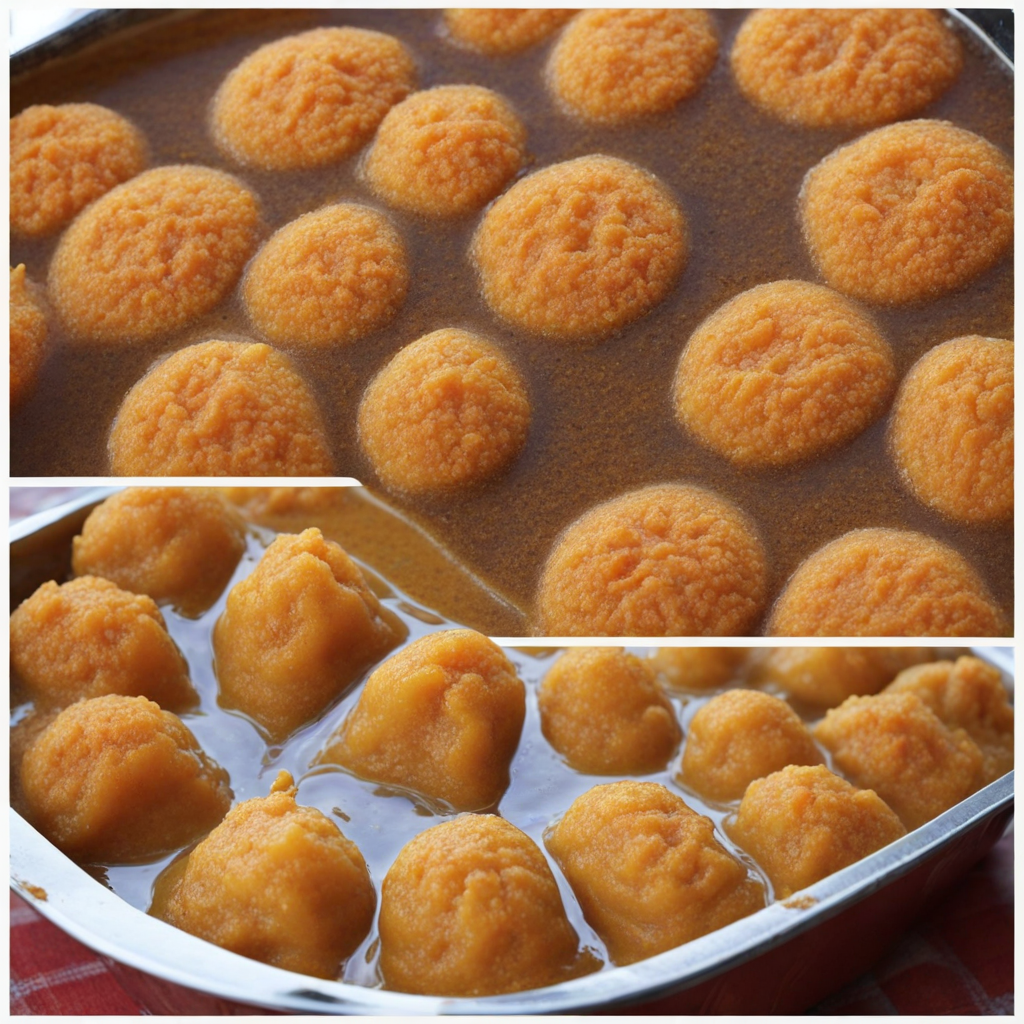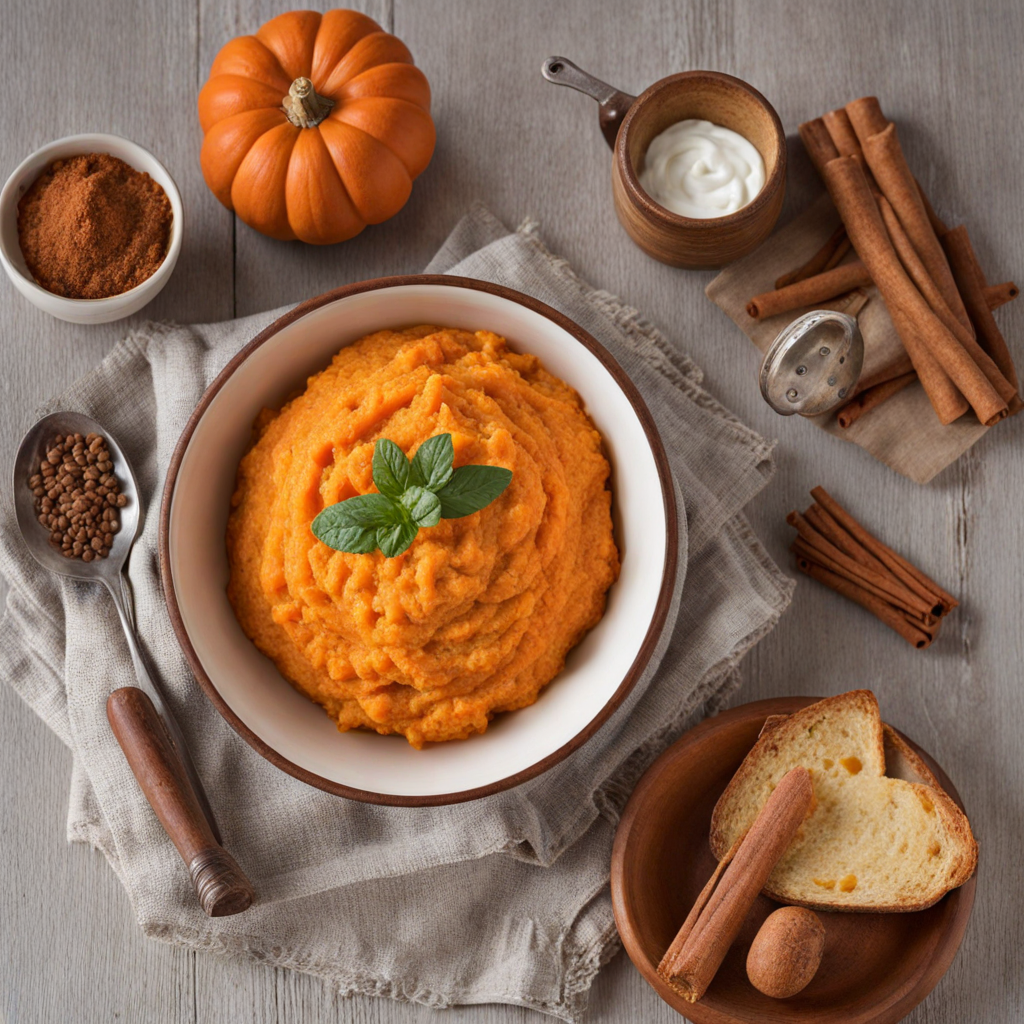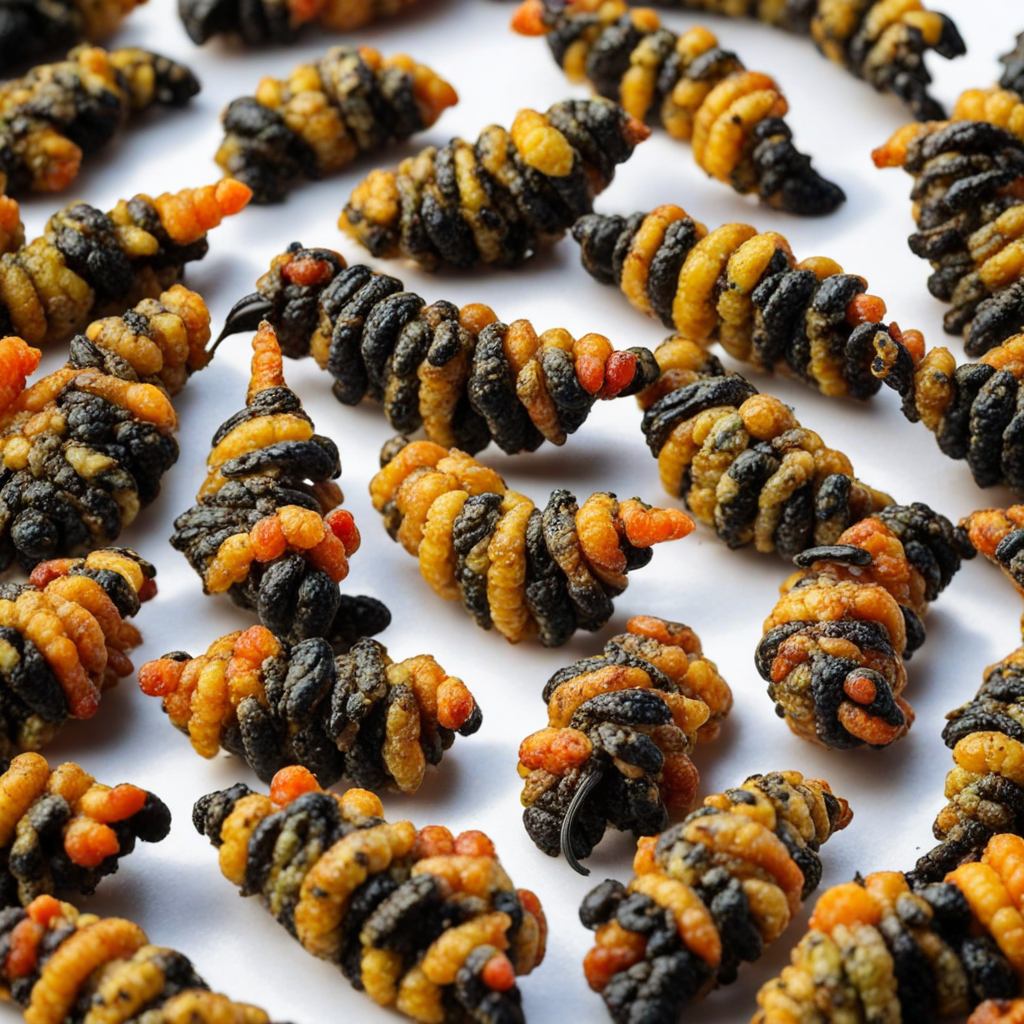Pampoenmoes
Pampoenmoes is a traditional South African dish that showcases the rich flavors and textures of pumpkin, a staple ingredient in many local cuisines. This delightful dish is made by cooking and mashing pumpkin, which is then blended with a combination of spices, sugar, and sometimes a hint of lemon or orange zest to enhance its natural sweetness. The result is a smooth, creamy mixture that captures the essence of South African culinary traditions while offering a unique twist that appeals to both the palate and the senses. The preparation of pampoenmoes often involves slow cooking the pumpkin until it becomes tender, allowing the sugars to caramelize and deepen the flavor. Once mashed, it can be served warm or cold, making it a versatile dish suitable for any occasion. It is typically enjoyed as a side dish alongside meat or braai (barbecue), but it can also stand alone as a comforting vegetarian option. The vibrant orange color of pampoenmoes not only makes it visually appealing but also signifies the nutritional benefits packed within, including vitamins A and C, as well as fiber. Pampoenmoes embodies the spirit of South African hospitality and home-cooked meals. It is often prepared for family gatherings, festive occasions, or simply as a way to bring comfort on a chilly day. The dish can also be a canvas for creativity; some variations include the addition of nuts, raisins, or spices like cinnamon and nutmeg, which lend an aromatic warmth to each bite. As you explore pampoenmoes, you’ll discover a dish that beautifully balances sweetness and earthiness, making it an unforgettable experience that invites you to dive deeper into the flavors of South Africa.
How It Became This Dish
Pampoenmoes: A Journey Through South Africa's Culinary Heritage #### Origins Pampoenmoes, a traditional South African dish, is rooted in the agricultural practices and culinary traditions of the indigenous Khoisan people, as well as those of the early European settlers. The dish is primarily made from pumpkin (known as "pampoen" in Afrikaans), which is native to the Americas but found its way to Africa through trade routes and colonization. The word "moes" refers to a type of stew or mash, typically made with vegetables, grains, or legumes. Pumpkins, particularly the orange-fleshed varieties, thrived in the warm climate of South Africa, making them a staple ingredient. The Khoisan people used various local plants and tubers to create hearty meals. With the arrival of European settlers in the 17th century, the culinary landscape began to evolve, incorporating more diverse ingredients and cooking techniques. #### Cultural Significance Pampoenmoes is more than just a dish; it embodies the spirit of South African culture and its rich tapestry of influences. The dish is often associated with family gatherings, harvest festivals, and community celebrations. As a comfort food, it evokes memories of home and warmth, making it an integral part of many households, especially during the colder months. In traditional settings, pampoenmoes is often prepared using a communal pot over an open fire, emphasizing the importance of togetherness and sharing in South African culture. It is typically served alongside meat dishes, reflecting the historical significance of meat in African cuisine, while also being versatile enough to stand alone as a vegetarian option. The dish also highlights the resilience of South African communities. During times of scarcity, pampoenmoes served as a way to make the most of available resources. The use of pumpkins, which could be easily grown and stored, showcased the ingenuity of local populations in creating nutritious meals from simple ingredients. #### Development Over Time As South Africa has evolved through various historical phases, so too has pampoenmoes. During the colonial era, the introduction of new cooking techniques and ingredients led to the dish's diversification. Europeans brought spices, dairy, and meat cuts that enriched the flavor profile of pampoenmoes. While the base of the dish remained largely the same, variations began to emerge that incorporated these new elements. In the 19th and 20th centuries, as South Africa faced socio-political changes, pampoenmoes became symbolic of both resistance and adaptability. With the rise of the apartheid regime and subsequent struggles, traditional foods like pampoenmoes were preserved as a form of cultural identity. They became a means of celebrating heritage in the face of oppression. Community cookbooks began to emerge, documenting these traditional recipes and ensuring that they would not be forgotten. The post-apartheid era saw a resurgence of interest in traditional South African cuisine, including pampoenmoes. With global culinary trends focusing increasingly on sustainability and plant-based diets, pampoenmoes found new life as a dish that aligned with modern food movements. Chefs began reinterpreting the dish, experimenting with flavor combinations while still honoring its traditional roots. #### Modern Interpretations Today, pampoenmoes is enjoyed in various forms across South Africa. It can be found in homes, local eateries, and upscale restaurants, often presented with a contemporary twist. Some chefs might incorporate spices such as cumin or coriander, while others might serve it alongside exotic proteins or garnishes. Furthermore, the dish has gained recognition beyond South Africa's borders. International food festivals and culinary events have showcased pampoenmoes, allowing it to be appreciated by global audiences. Cookbooks featuring South African cuisine often include pampoenmoes, emphasizing its role as a comfort food and a source of cultural pride. #### Conclusion Pampoenmoes is more than just a simple pumpkin stew; it is a dish that encapsulates the essence of South Africa’s diverse cultural heritage. From its origins among the Khoisan to its adaptation through colonial influences and its resurgence in modern culinary scenes, pampoenmoes represents the resilience, creativity, and communal spirit of South African people. As the world continues to embrace diverse culinary traditions, pampoenmoes stands as a testament to the power of food in bringing people together, preserving history, and celebrating identity. Whether enjoyed in a bustling city restaurant or a quiet rural home, this beloved dish remains a vital part of South Africa's gastronomic narrative, inviting everyone to partake in its rich history and vibrant flavors.
You may like
Discover local flavors from South Africa







